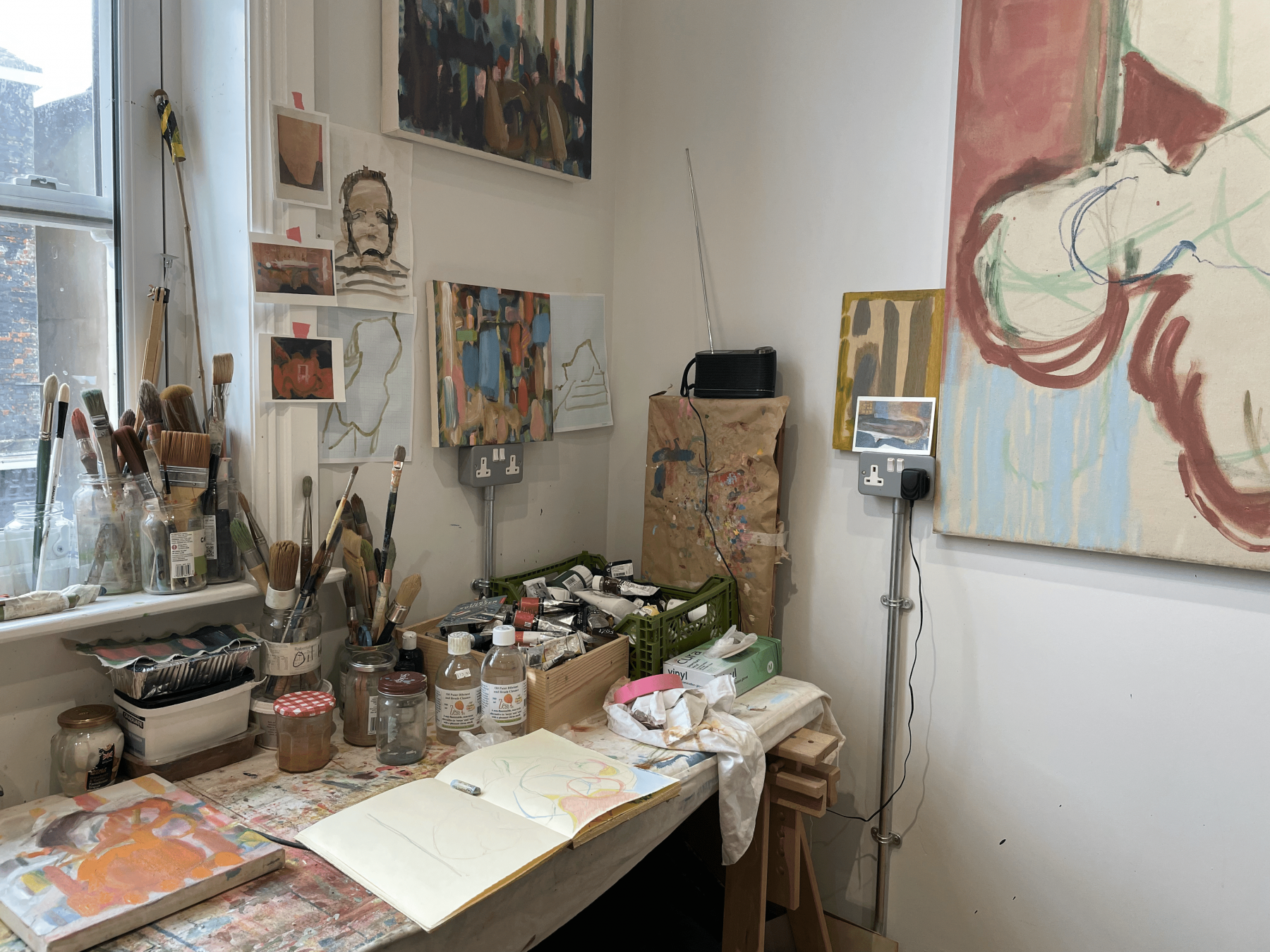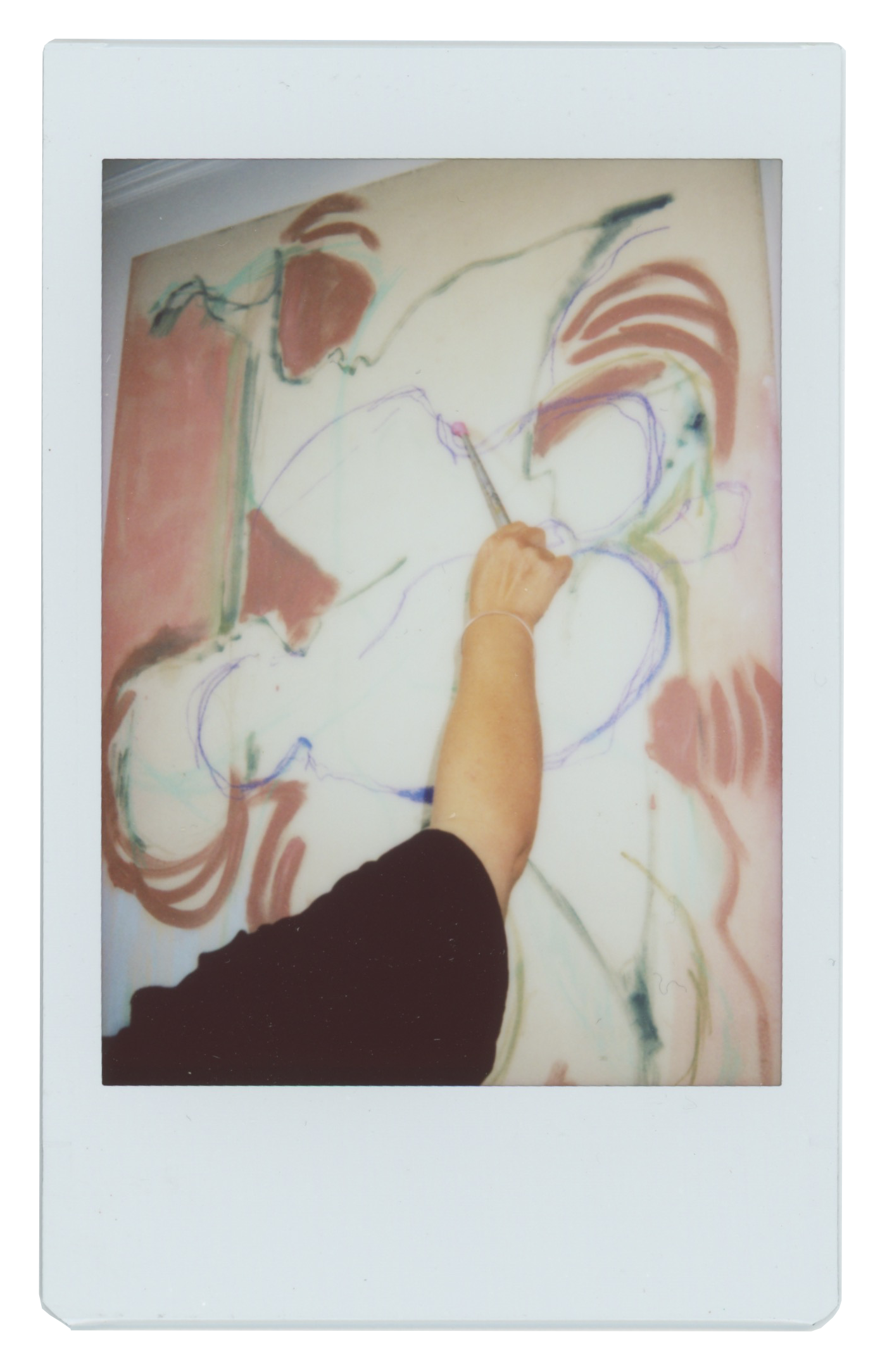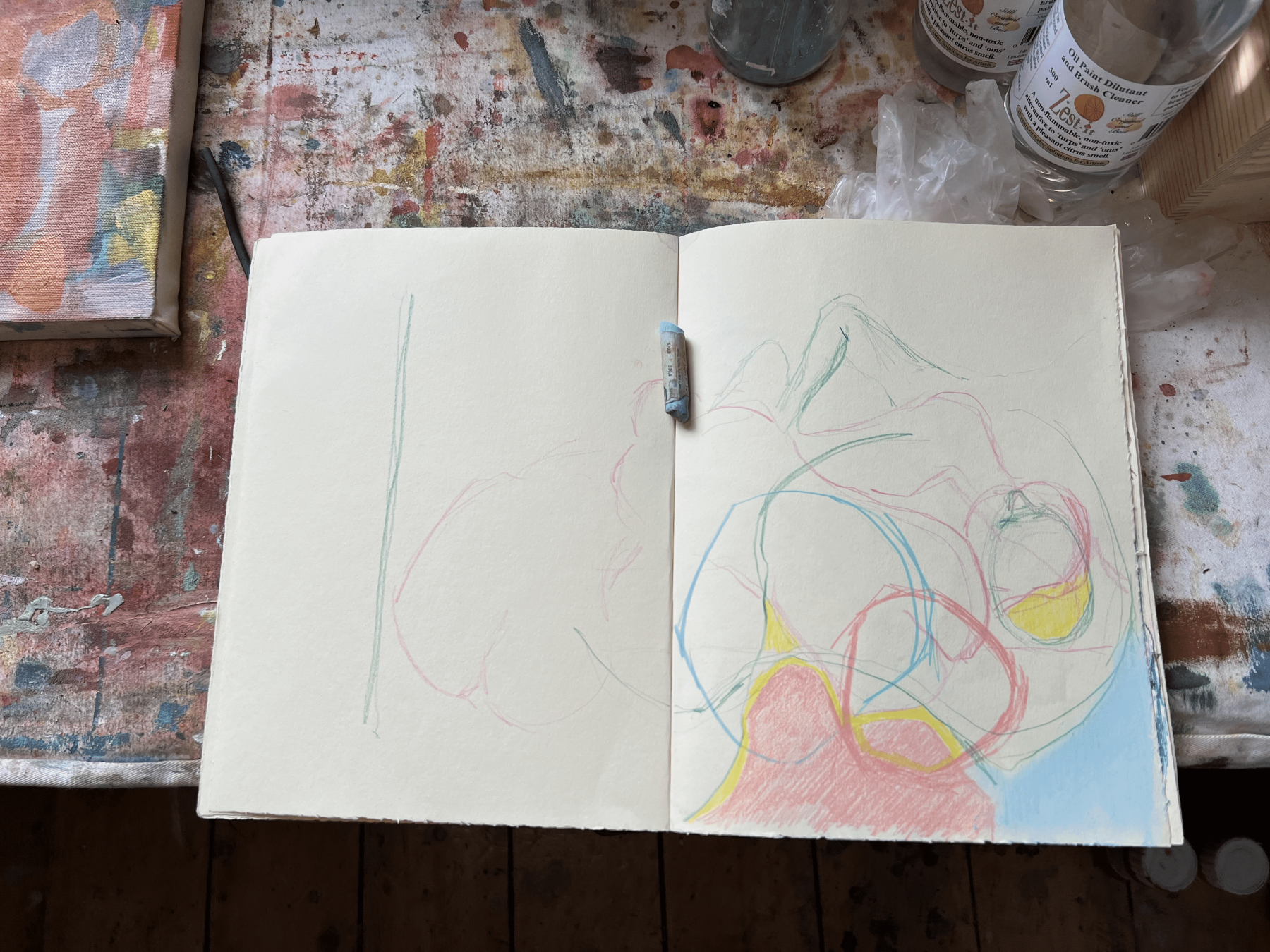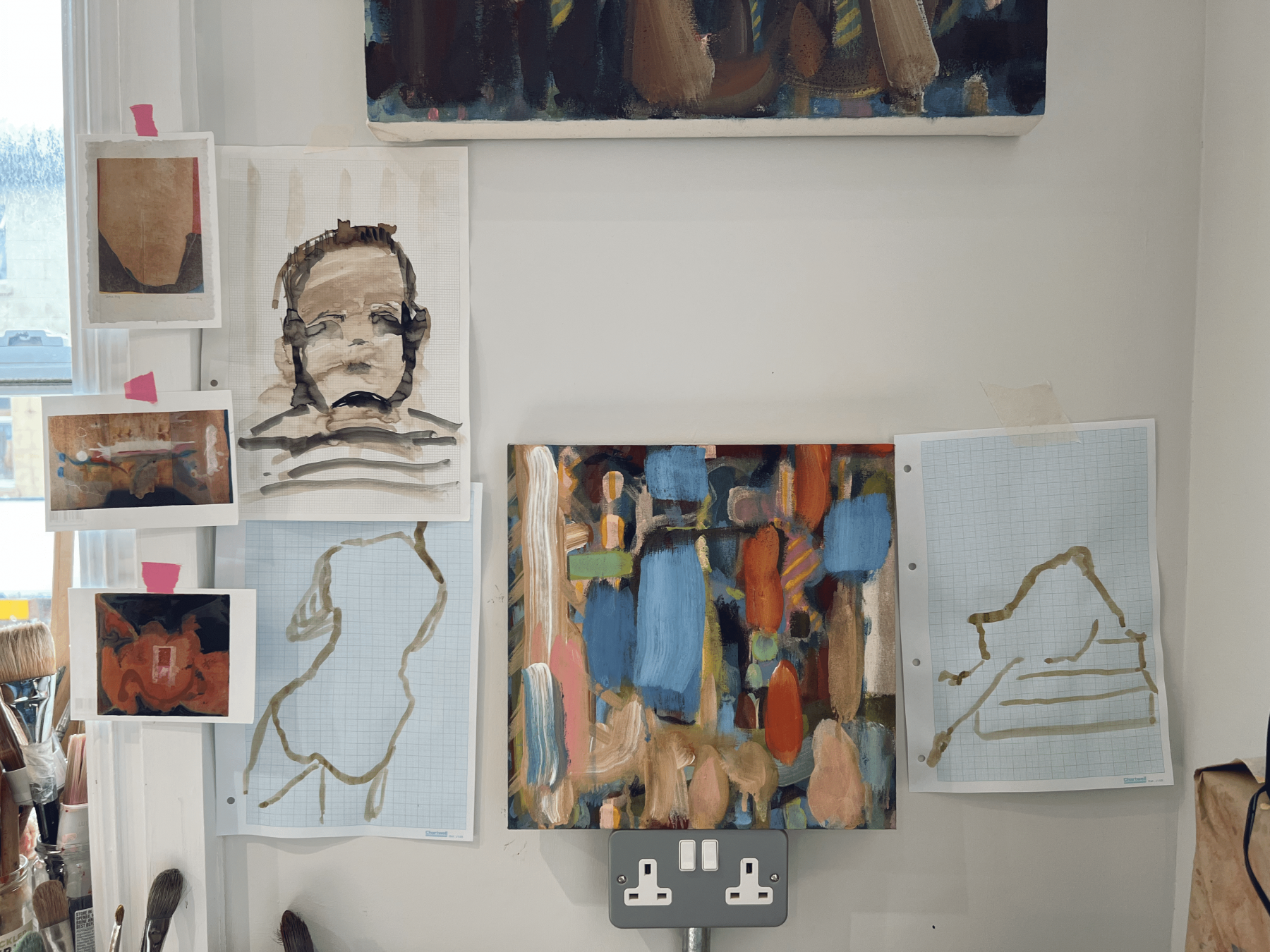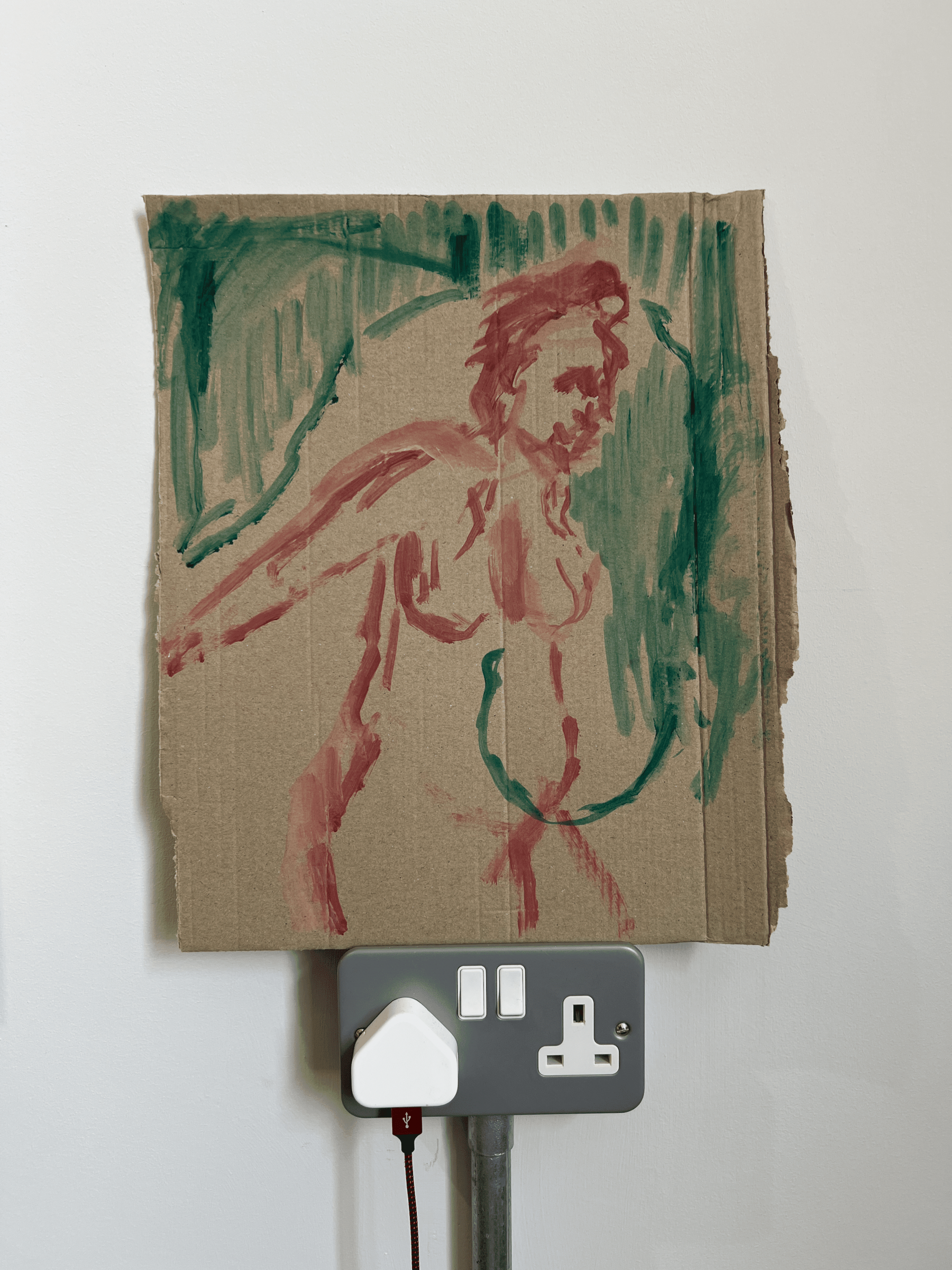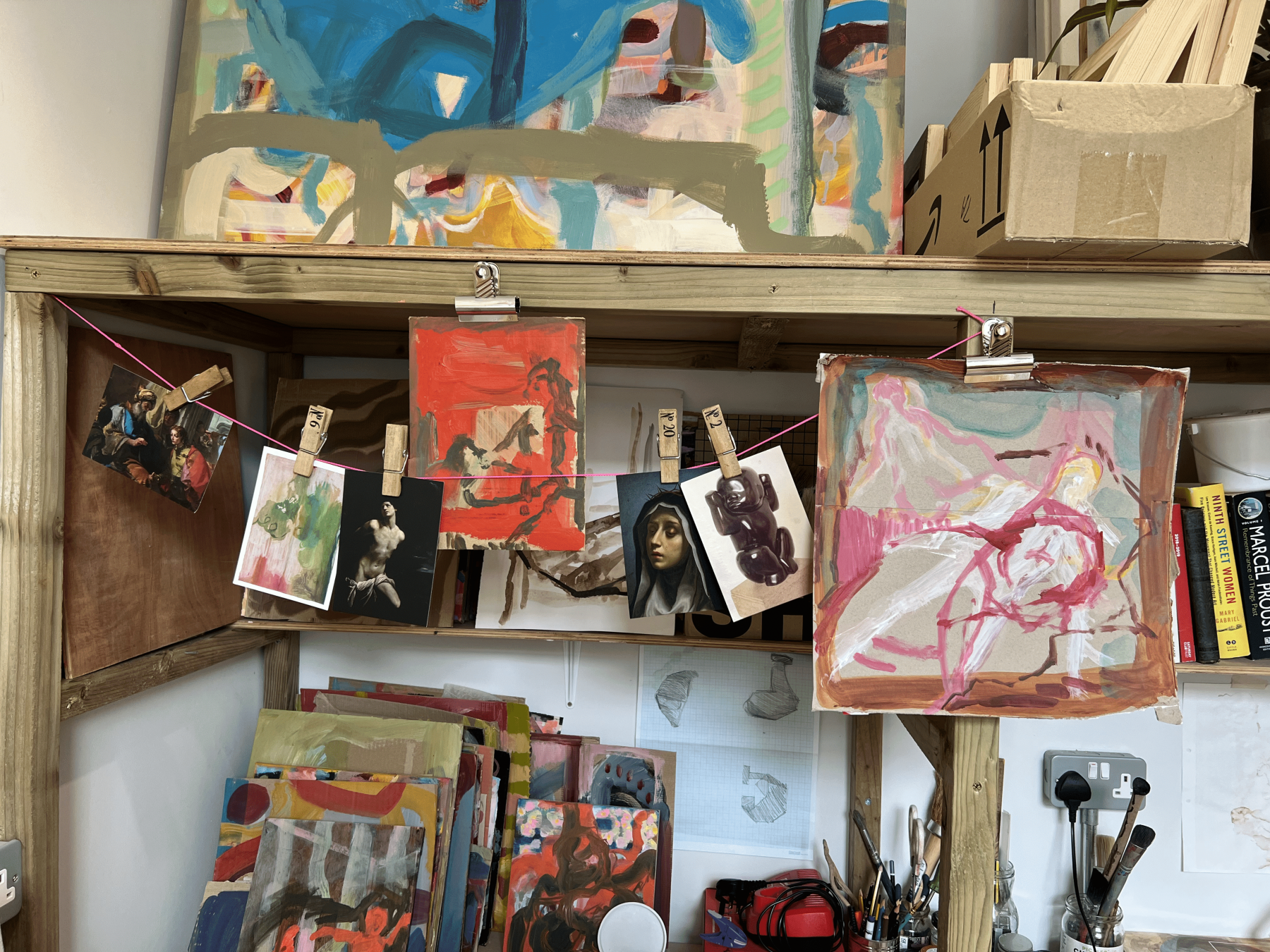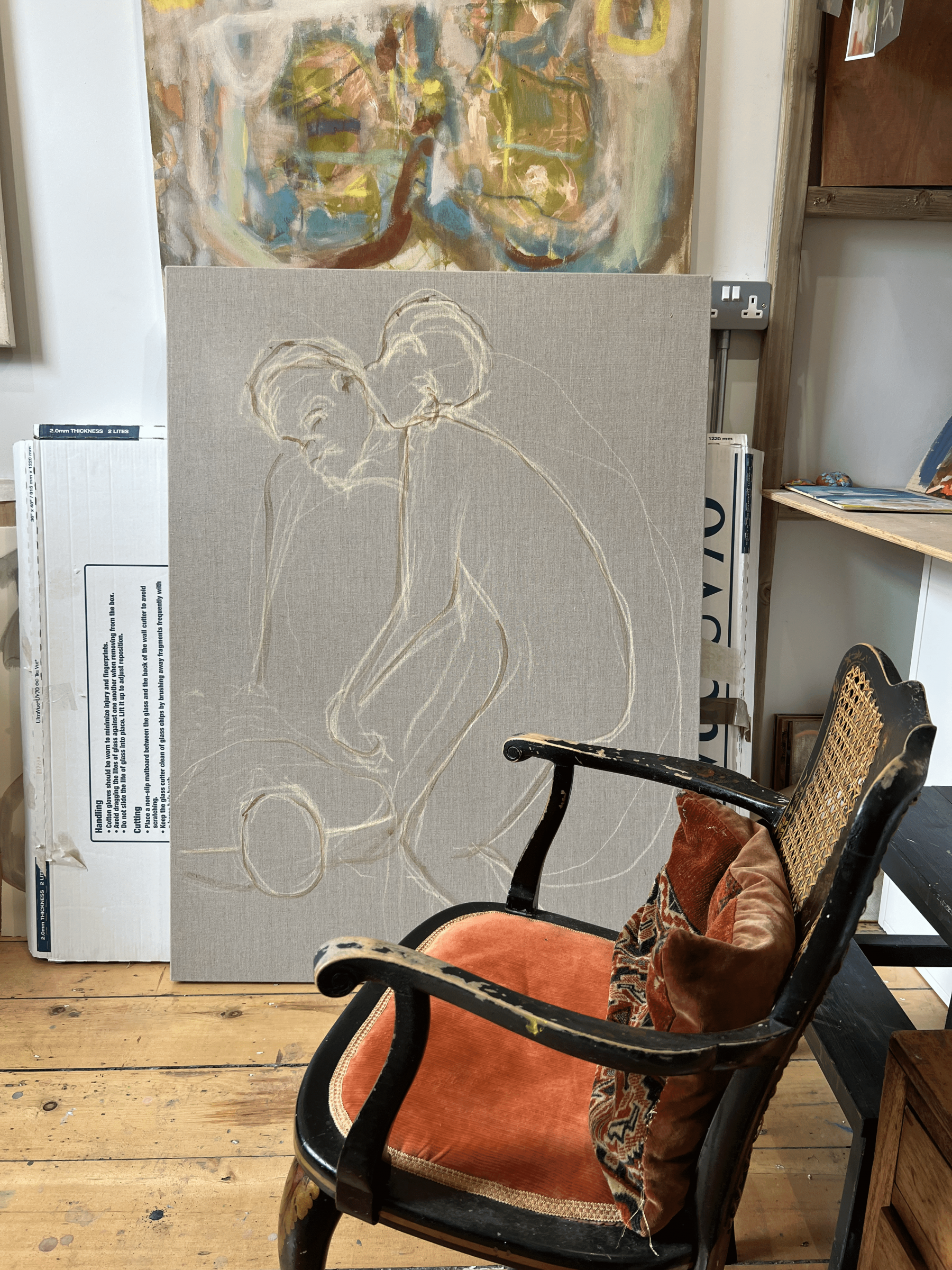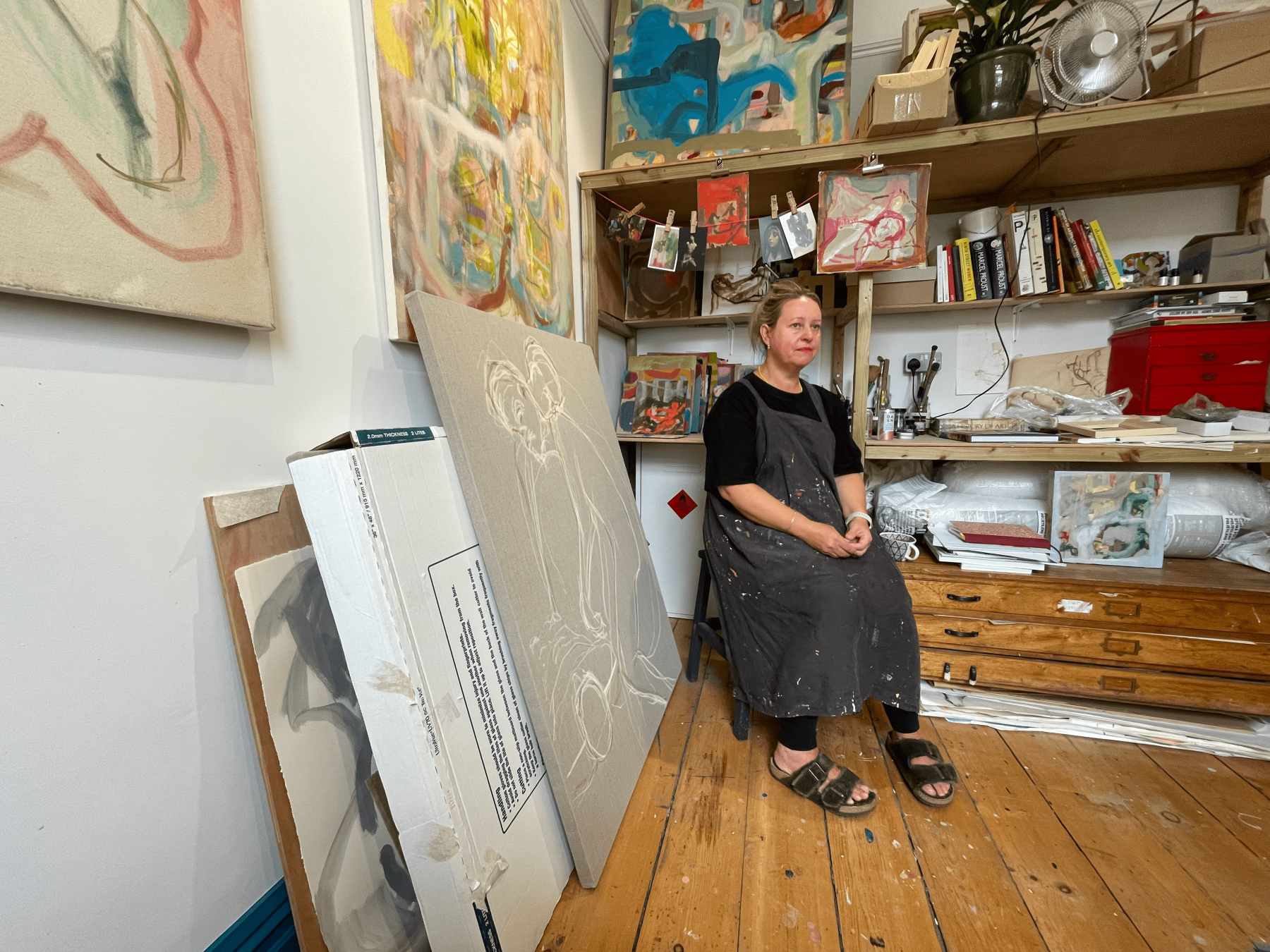Jayne Simpson’s recent paintings started as a reminder in how to explore paint possibilities, rituals of subconscious mark making, often for mark makings sake and the cathartic and meditative process. She describes ‘stripping the responsibility from her painting practice, and starting a new, indulgent but healing process’. Her colour choices were both daring and deliberately ignorant, it was all about the action, the language and curiosity.
A return to the human form and experiences that anchor the drawing or structure to each work. The paintings tentatively portray narratives and suggestions of grief, love, motherhood, ageing, hints of exhausted or succumbed figures, draped, or fallen, propped, or resting, often drawing on traditional religious compositions or iconographic layouts. Still she wrestles away figurativeness through her endeavours for ambiguity in abstraction and her ambition to keep her paintings raw, intuitive, and responsive.
Unconsciously painting through experimental processes and applications for some time, she is now finding her islands in a sea of discovery and through her everyday studio endeavours in painting. This openness is certain of new objectives, the emotions and identifiers evoke from each work. The colour and brush marks are still as instinctual and raw as ever, but now there is a developed ‘code’ (language) for which to carry each intention and it feels right.
This vital energy is the visual language and underpinned by moments of memory or physical recollections and engaged to construct these emotive experiences and express the layers of humanness through established, instinctual colourways, drawing with paint and rendering a dispersion or veil that represents the concealed or revealed narrative.
The push and the pull in each painting is a constant metaphor for what the human experience can teach us, each love, loss or everyday experience and interaction. What is happening on a sociological or political or environmental level, what is absorbed through the senses has a bearing on each work, the changes or struggles we all navigate daily are expressed through layers (conversations), bodily shapes or forms that divide and travel through the surface of each painting.
To visit Jayne's website, click here.
